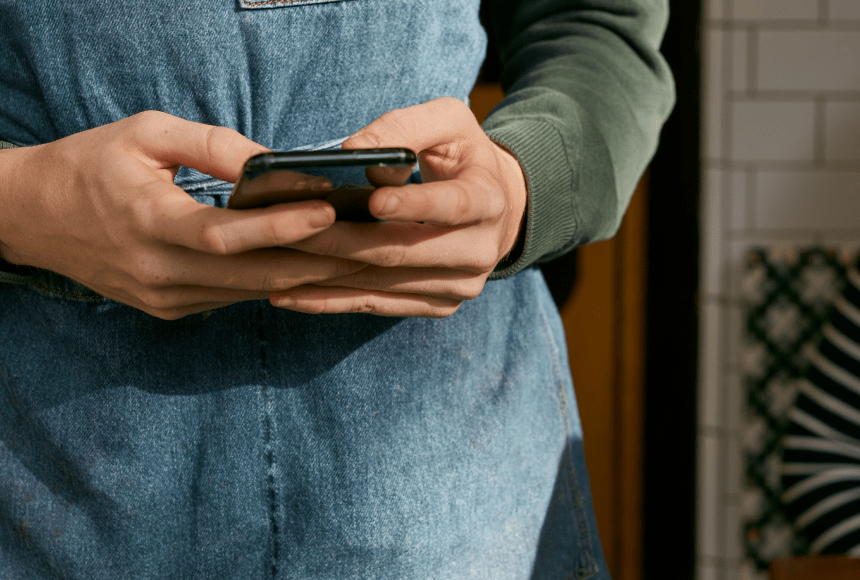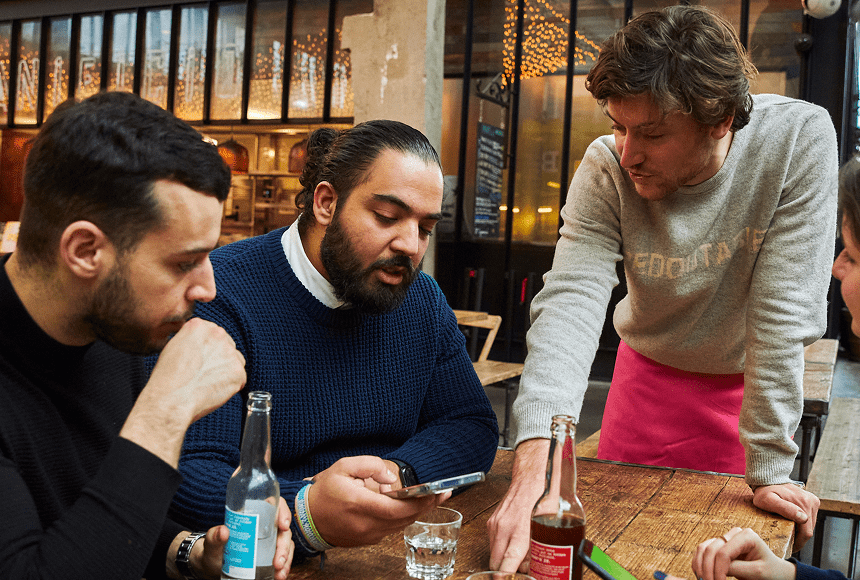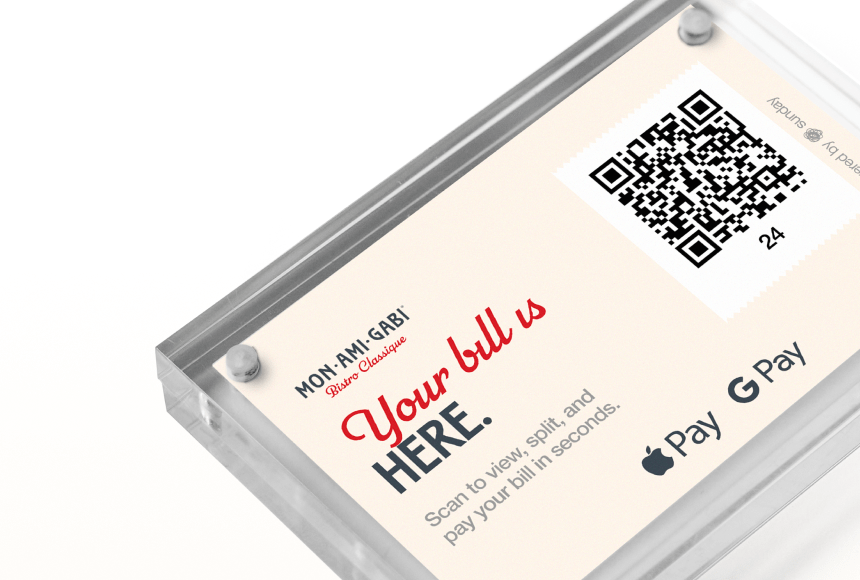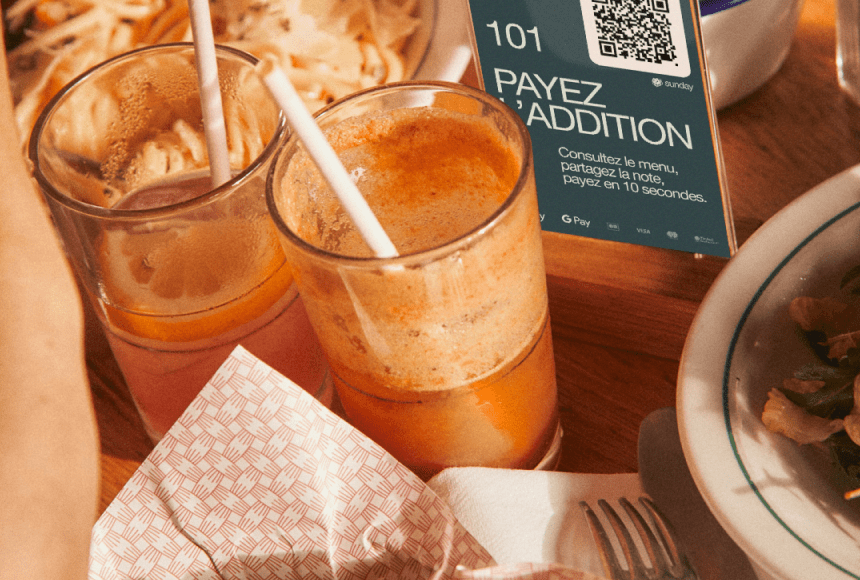
Why Tap-to-Tip Has Taken Center Stage for Modern Diners
Unfolding the Connection Between Tipping Culture and Emotional Triggers
Picture the moment: a group of friends leaving a trendy bistro, all satisfied from a delightful meal, each discreetly pulling out their smartphones to grab the check. They scan a quick response (QR) code, choose a tip, and finalize payment within seconds. Modern convenience at its best, right? But behind this seamless digital tipping experience is a rich tapestry of psychology that guides how your guests make tipping decisions. Understanding these subtle behavioral cues is key to optimizing your restaurant’s customer experience.
In the United States, tipping has long been an integral part of dining etiquette—some might argue it’s practically a national pastime. Yet, the move to digital tipping is changing the way diners approach this habit. As many restaurants modernize their point-of-sale (POS) terminals or introduce app-based payments like sunday, the emotional signals that motivate tipping can shift. Drawing on social psychology and consumer behavior studies, we can see how digital platforms spur customers to either increase or decrease their standard tipping amounts.
Let’s explore how this shift happens, why it matters, and how you, as a restaurant owner, can harness psychological insights to cultivate a more profitable and pleasant environment—one tip at a time.
How Subtle Cues Influence Tipping Decisions
While diners may outwardly attribute tips to good service, many psychological and contextual elements shape tipping behavior. A 2021 survey from the National Restaurant Association revealed that over 70% of guests decide on a tip amount based on more than just food quality. Factors like atmosphere, ease of payment, and even color choices on a digital interface can play a surprising role. Here’s a closer look at these underlying triggers:
- Reciprocity: From a cognitive perspective, customers feel compelled to reward kindness. If they sense genuine care from the server, they may reciprocate that generosity when the tip prompt appears on a digital screen.
- Social Proof: For many, a tipping prompt such as “most customers tip 20%” can nudge them to match that norm—few people want to be perceived as inadequate tippers.
- Choice Architecture: The layout of tip options (e.g., 15%, 20%, 25%) influences which amount is most likely to be selected. Digital prompts often favor higher default percentages; it feels natural to tap on a recommended number rather than manually typing in a lower tip.
- Instant Gratification: Quick digital payment makes tipping feel convenient—akin to a “tap-to-tip.” Less friction often leads to higher tips because the motion is easier and less time-consuming.
- Sunk Cost Bias: Diners might have already spent on appetizers, entrées, desserts, and drinks. When the final total is displayed, adding a few extra dollars to the tip might feel less daunting than recalculating a budget line by line.
Why Digital Tipping Sometimes Beats Cash
There is no denying the joys of tangibly leaving bills on the table; it feels personal. Nonetheless, digital tipping stands out for several reasons that play into psychological convenience. Traditional tipping methods often rely on discretionary math (e.g., “Is 20% of $45 about $9?”) plus rummaging for exact change. When a sleek interface presents predefined amounts, it removes the mental load. Suddenly, what would have been an 18% or lower tip becomes 20% or higher because the path of least resistance is simply tapping a button.
Moreover, digital tipping prompts are immediate. The user sees the total bill and is guided through an on-screen suggestion before concluding payment. This can yield a slight “nudge effect,” where diners, in the moment, lean toward the suggested tip recommendations. Psychologically, many people prefer to adhere to social norms. Seeing a recommended range of 15–20–25% or more sets the frame. Most guests don’t want to appear stingy, even if that sense of accountability is purely in their own minds.
On top of that, digital systems often include a quick comment section or an option to post a review. Customers who leave positive feedback about their server or their overall dining experience are usually more inclined to leave a bit extra. The synergy of positivity—compliments and tips—creates a rewarding loop for the diner, server, and restaurant.
The Humanizing Elements of a Digital Approach
One might assume that shifting from a warm, face-to-face tip handoff to a screen-driven tipping process could alienate customers. However, when executed correctly, digital tipping can actually enhance the sense of personal connection. The trick is to implement technology without sacrificing the human side of hospitality.
For example, consider training your servers to briefly explain the digital payment process. A short phrase like, “If you have any questions about how to leave a tip or share feedback, just tap the screen, and I’m right here to help,” reassures guests that they’re not alone in navigating new technology. Even though the action is digital, the interaction remains personal and supportive.
This aligns with sunday’s design philosophy: an effortless, inviting payment solution that merges the convenience of a QR code with an inherent sense of hospitality. By making the payment moment simple—and yes, even warm—you’re demonstrating thoughtfulness toward your guests’ time and comfort.
Practical Ways to Engage Diners and Boost Tipping
As a restaurant owner, it can feel challenging to guide guests toward a positive tipping mindset. Beyond ensuring high-quality cuisine and attentive service, it helps to employ strategic approaches to boost your team’s gratuities and maximize overall revenue. Here are some actionable tips:
- Optimize Your Menu Pricing: A mismatch between menu prices and perceived value can sour the guest experience before they reach the payment screen. When diners feel the meal justifies the cost, they’re more willing to tip generously.
- Train Staff on Relationship-Building: Empathy and attentiveness matter. The more authentic your team’s engagement with guests, the higher the likelihood of strong tips. Simple gestures—like remembering a returning customer’s favorite dish—can foster loyalty.
- Customize Your Tip Suggestions: When guests pay via a digital platform, present tipping options relevant to your restaurant’s average check size. For instance, 15–20–25% may be reasonable for a mid-priced eatery, whereas 20–25–30% might be standard in a fine-dining atmosphere.
- Leverage a Sense of Community: Highlight where those tips go. If it’s shared among the whole team or allocated to back-of-house staff, let diners know. Transparency can encourage them to tip more because they see the tangible community impact.
- Test Different Layouts: Conduct small-scale testing with your digital payment provider. Some designs or color schemes might encourage higher tipping levels than others. Psychology is intricate; sometimes a green button that says “Thank You” outperforms a standard black-and-white button labeled “Confirm.”
A Glimpse into Behavioral Metrics
To truly master tipping psychology, don’t shy away from data: your digital payment solution likely includes analytics that reveal how often guests select each tip option. By analyzing these behaviors, you can adapt your strategy in real time.
For instance, if you find that only 10% of customers opt for 25%, you might decide to reposition or rename the highest tier. Instead of “25%,” try “Treat Your Server: 25%.” Words can significantly influence emotional reaction. In a 2022 experiment by a major online ordering platform, simply labeling a higher tip percentage as a “generous” option increased usage by nearly 15%.
Additionally, you may discover differences in tipping habits by daypart, type of meal, or party size. Use these insights to customize staff training. A robust solution like sunday can simplify data collection and analysis, giving you a panoramic view of your restaurant’s performance. This ranges from identifying which meal times see the highest average tip to understanding if staff members generate more tips in different sections of your venue.
Overcoming Resistance to Digital Tipping
Not all guests will instantly embrace digital tipping methods. Some might be concerned about data privacy, hidden fees, or simply miss the habit of leaving a physical tip. Keep their concerns top of mind when rolling out your digital payment system.
Address common pain points:
- Reassure Security: Emphasize secure encryption for card details and personal data. Provide a short, clear explanation of how you protect their information.
- Highlight Transparency: Show the tip amount, any transaction fees, and the final total plainly. Avoid burying extra costs in fine print to build trust.
- Offer Traditional Alternatives: Continue to accept cash tips for those who prefer it, especially in the short term. Present the digital option as a faster, more convenient method, instead of an enforced mandate.
The more you anticipate guests’ concerns, the easier it is to facilitate their transition to digital tipping. Ultimately, they’ll come to appreciate the speed and practicality that streamlined, mobile-first options provide.
When Tipping Meets Ratings and Reviews
In today’s connected world, tipping doesn’t always stand alone. Many digital payment solutions also encourage or even prompt diners to leave public feedback. From a psychological standpoint, positive online reviews can create what researchers call a “halo effect.” When diners are happy with their meal, they not only tip more but also leave glowing comments on platforms like Google. This synergy between tipping and brand reputation can drive new customers to your restaurant.
Diners who are asked to leave a review immediately—while still feeling the warm afterglow of a delightful experience—tend to be more generous both in their words and their tipping. A digital payment option can plant that review link right into the checkout flow. This is why solutions such as sunday offer more than just quick payments; they invite diners to share their enthusiasm publicly. In the long run, that can expand your digital footprint, attract new guests, and retain satisfied regulars.
Cultivating Hospitality in a Digital Age
Fear not that technology will steal the limelight from your culinary or service expertise. It’s all about the synergy between dedicated hospitality and guest-friendly tools. Restaurants that see the best return on digital tipping solutions are those that position the process as an integrated part of the dining journey—not an afterthought or an impersonal transaction.
Make it your team’s mission to remain attentive at every step, even when technology enters the picture. For instance, upon seating your guests, you might let them know that payment, tipping, and feedback can all be done at their convenience through a simple QR code. This sets the stage for a frictionless finale. When your staff rounds off the experience by checking in, they can remind guests that they’re available to clarify anything on the digital payment screen. Seamless, supportive, and fully in tune with the classic hospitality ethic.
Long-Term Impact: Stronger Guest Loyalty and Higher Staff Morale
Behavioral science teaches us that people remember how you make them feel more than what you say. If customers are left with a convenient, reassuring, and respectful tipping process, they’re more likely to come back—often with friends or family in tow. That directly impacts your bottom line. Better yet, staff who consistently earn higher tips from digital suggestions are more satisfied and motivated, contributing to lower turnover rates.
By weaving technology, good training, and strategic presentation of tipping options together, you’re tapping (pun intended) into a powerful cycle of positivity. Guests will recall the seamless checkout, the staff will enjoy the boost in earnings, and your establishment wins a reputation for forward-thinking hospitality. In a landscape increasingly driven by online reviews and word-of-mouth, these small moments of convenience and generosity can truly set you apart.
Embrace the Change to Elevate Guest Experience
The conscious design and implementation of digital tipping tactics might sound like a new frontier, but in reality, it’s simply a modern adaptation of classic hospitality ideals. When you embrace these innovations—carefully, ethically, and with a human touch—you help guests navigate the transition smoothly. This is especially meaningful in a bustling environment like the American restaurant scene, where consumer expectations are high and the pace of change is relentless.
Keep in mind that digital tipping is not just about earning a slightly higher percentage of gratuities—though that’s an obvious advantage. It’s about creating an effortless, satisfying end to your guests’ dining journey. By letting your customers tip, review, and finalize their payment swiftly, you reinforce the enjoyment of the evening and pave the way for their return.
So, if you’ve been hesitating about upgrading your POS terminals or adopting a QR code-based payment system, consider the hidden psychology that might be fueling customer decisions. By welcoming digital tipping, you’re offering a subtle boost to your profits, providing staff with more financial security, and giving your diners a refreshingly straightforward way to conclude their visit. Above all, your restaurant will earn a reputation for both modern convenience and genuine care.
Find out more today
Drop us your details below and we’ll reach out within the next 24h
More tips means a better service.
More tips mean better guest-experience, and better staff-retention.




